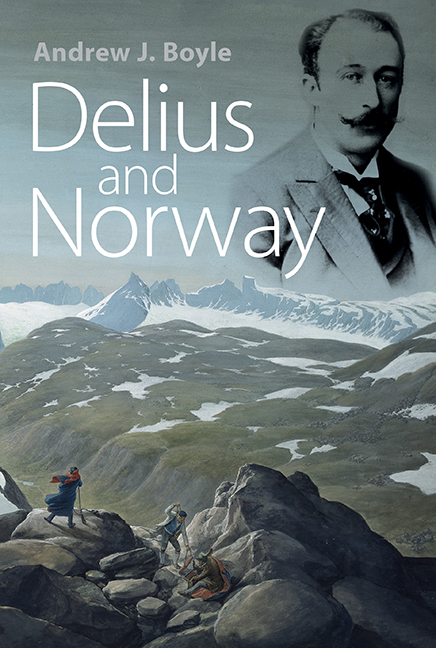Book contents
- Frontmatter
- Dedication
- Contents
- List of illustrations and tables
- Preface
- Abbreviations
- Selected glossary of landscape terms used in place names
- 1 Norway's awakening
- 2 1862–1888: Bradford, Florida and Leipzig
- 3 1888–1889: With Grieg on the heights
- 4 1890–1891: ‘C'est de la Norderie’
- 5 1892–1895: Norway lost
- 6 1896: Norway regained
- 7 1897: Front page news
- 8 1898–1902: Unshakeable self-belief
- 9 1903–1907: Breakthrough in Germany and England
- 10 1908–1912: Changes of direction
- 11 1912–1918: High hills, dark forests
- 12 1919–1934: Myth and reality in Lesjaskog
- Appendix I List of visits to Norway
- Appendix II Works with Norwegian and Danish texts and associations
- Selected bibliography and archival sources
- Index
4 - 1890–1891: ‘C'est de la Norderie’
Published online by Cambridge University Press: 30 August 2017
- Frontmatter
- Dedication
- Contents
- List of illustrations and tables
- Preface
- Abbreviations
- Selected glossary of landscape terms used in place names
- 1 Norway's awakening
- 2 1862–1888: Bradford, Florida and Leipzig
- 3 1888–1889: With Grieg on the heights
- 4 1890–1891: ‘C'est de la Norderie’
- 5 1892–1895: Norway lost
- 6 1896: Norway regained
- 7 1897: Front page news
- 8 1898–1902: Unshakeable self-belief
- 9 1903–1907: Breakthrough in Germany and England
- 10 1908–1912: Changes of direction
- 11 1912–1918: High hills, dark forests
- 12 1919–1934: Myth and reality in Lesjaskog
- Appendix I List of visits to Norway
- Appendix II Works with Norwegian and Danish texts and associations
- Selected bibliography and archival sources
- Index
Summary
‘It seems radiant with glory, that time’
Letter from Nina Grieg to Delius, 22 May 1909While young Norwegian musicians had sought an education in Leipzig in the first half of the nineteenth century, painters were drawn to the academies in Düsseldorf and, later, Munich. With the emergence in France of the early impressionists and the Barbizon school, however, the European art map was redrawn. In the last two decades of the century, German academies lost much of their attraction for Norwegian art students, who elected rather to submerge themselves in la vie de bohème. In 1878, as part of the Exposition Universelle – the World's Fair in Paris – a huge exhibition of art was staged that revealed to Norwegian artists the pre-eminence of contemporary French art. Among the Norwegians who moved to Paris after the exhibition were Christian Krohg, Hans Heyerdahl and Erik Werenskiold. Attracted by liberal Parisian society, many female Norwegian artists – including Kitty Kielland, Harriet Backer and Asta Norregaard – also fled there from petty bourgeois Kristiania.
Radical Norwegian authors, too, turned their backs on the classical inspiration of Rome in favour of Paris, as Torleiv Kronen has pointed out: ‘The new republic rekindled the hope of fulfilling the old promise: freedom, equality and brotherhood. A generation of writers with Flaubert, Zola, Maupassant and the brothers Goncourt at its head augured well for a wholly new way of thinking. The arts, in particular literature, were expected to serve reality. For Norwegian writers, realists as they were, this was irresistible.’ Bjornstjerne Bjornson lived in Paris for five years (1882–87) and Jonas Lie for twenty-four years (1882–1906); the homes of these literary beacons became rallying points for Norwegian thinkers and artists.
These and other Scandinavian figures prepared the ground for the extraordinary obsession with everything Nordic that swept Paris in the 1890s. It was the second generation of Norwegian painters – those who arrived there around the same time as Delius – that would harvest the fruits; they came to a city whose art lovers could not got enough of chill northern landscapes in either naturalist or later neo-romantic styles.
- Type
- Chapter
- Information
- Delius and Norway , pp. 66 - 96Publisher: Boydell & BrewerPrint publication year: 2017

